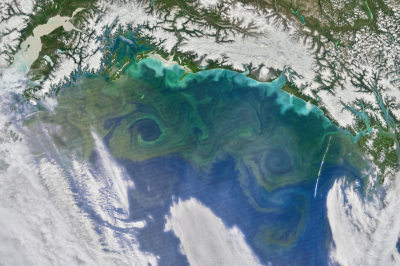In a recent article published in the journal Science, reporter Warren Cornwall writes:
“Five years after an unusual pattern of warm water started to form in the Gulf of Alaska, scientists are starting to understand the sweeping ecological impacts of an underwater heat wave that became known as The Blob. From tiny algae to humpback whales, the warm patch of water that eventually stretched across much of the west coast of North America touched virtually every level of the ecosystems there. Although the Blob has now faded, its effects continue to be felt. This research comes at a time of growing scientific interest, and mounting concern, about these underwater heat waves. Scientists now predict they will become more intense, more frequent, and longer lasting over this century, because of climate change. Blob-like temperatures are expected to become the new normal in the northeast Pacific Ocean by midcentury.”
The article spotlights Blob-related findings from the GulfWatch Alaska program for copepods (PI: Russ Hopcroft), forage fish (PI: Mayumi Arimitsu), and seabirds (PI: John Piatt), as well as includes research from program partners at NOAA and the US Fish and Wildlife Service.
The article can be accessed at: Cornwall, In Hot Water Science 363 (6426) 10.1126/science.363.6426.442 (2019).



